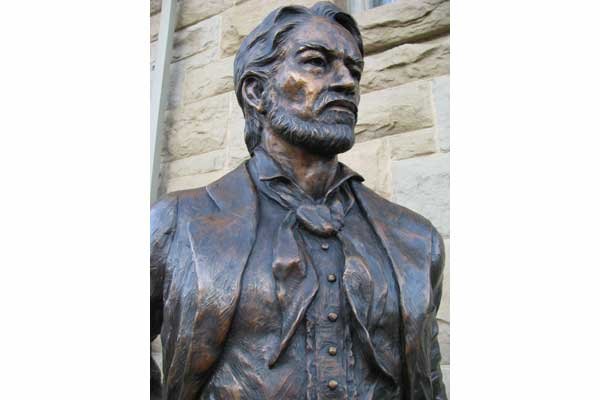Samara was out walking in a remote wooded area of Gilroy one
crisp autumn day with her husband and her dog, Blue. She was
accustomed to walking there daily on the back trails of Christmas
Hill Park. It is not an easily accessible area
– you have to intentionally drive there, park and then hike. On
the way up, they saw only one other parked car.
Samara was out walking in a remote wooded area of Gilroy one crisp autumn day with her husband and her dog, Blue. She was accustomed to walking there daily on the back trails of Christmas Hill Park. It is not an easily accessible area – you have to intentionally drive there, park and then hike. On the way up, they saw only one other parked car.
As she and her husband were deep in conversation, she noticed a figure out of the periphery of one eye, coming over the hill ahead of them. She didn’t really think anything of it, but she did pay attention because of Blue. She needed to keep a tight leash and make sure the other person didn’t have a dog that Blue might react to.
“A funny thing I remember is his hat was the first thing that came into view as he walked up the back trail,” she recalled. “Then his head and torso, etc., appeared.”
“He was a tall, thin, slow moving fellow,” she said. “His clothes just didn’t look contemporary. The shirt was long-sleeved and rather billowy, but seemed to be made from rough cotton. It was pale yellow in color and tucked into a wide leather belt. He had on a brimmed hat, but with a flattened kind of top, not rounded, where the head goes. The pants almost looked like they could have been leather – but not like disco leather. Kind of well-used looking, and I think there were either flaps on the side, or at least they were loose-legged and not tailored in any way – roomy.”
As she observed other details, she realized how completely out of place he looked. Neither she nor her husband said anything about it, but she was surprised to observe that Blue did not react at all – he didn’t look over at the man or bark or react in any way.
The man went past them on a side path and disappeared in the direction they had come. Later on, as they returned to their car, they saw two women come out of the woods and get into the one and only other car parked there.
“What happened to that old guy?” her no-nonsense, very logical husband suddenly asked.
There was a slight pause. Then they both turned to each other with the same look of ” … do you think … ?”
He answered before she could get anything out, “Yes, I think we saw some kind of apparition…”
He went on to comment about how the man had been looking around, and Samara agreed.
“It was like he was out walking the lay of the land, looking over the hills,” she said recently, reflecting on the experience several years earlier. “It seemed like he hadn’t seen it in a long time and was surprised to see how it had changed.”
Both she and her husband had the impression that something had shifted reality for just a moment.
“It wasn’t like a filmy figure,” she said. “But something that walked into our peripheral vision – and it felt as if we had peered into another time for those few moments.”
She continued to frequent that area and kept an eye out, but never saw the man again. Samara was so taken with the guy’s appearance that she went to the museum and began looking up pictures of Gilroy old-timers. She thought about early settler Henry Miller, but when she saw his picture, there was no resemblance. She did think one of his ranch hands was dressed in a similar way.
Two weeks ago, I went downtown to see the new sculptures of historic figures of Gilroy that were being unveiled. I came upon Samara as she was viewing the sculptures for the first time. It seemed as if she was mesmerized.
I asked her what she thought of them. She said that the man in the sculpture by the Old City Hall looked like the man she saw hiking that day on the hill. She recognized his face. He was – are you ready for this? – John Gilroy, the Scottish sailor who became the first non-Spanish settler in California legally recognized by the Spanish crown, and our city’s namesake.
“The bronze statue of John Gilroy was sculpted from my model, David Hill, who posed in period dress,” sculptor Marlene Amerian told me when I asked how she had achieved such a lifelike representation of someone who lived here way back in 1814.”
“Although there are no existing photos of John Gilroy, there is a photo of his son, Catarino Gilroy, in the Gilroy museum,” Amerian said. “Catarino was reported to bear close resemblance to his father. When David and I visited the museum, we were struck by the uncanny resemblance between David and Catarino.”
Did Samara and her husband see the real John Gilroy that day on the hill? We may never know, but perhaps reality is more fluid than we think, and dimensional shifts exist around us all the time.
It’s just that most of us haven’t developed the consciousness to see them.
“It’s not another world,” Samara said. “It’s the same world – we just haven’t the eyes yet.”















